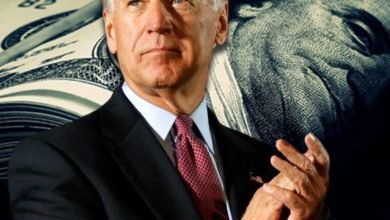What Trump said on steel and aluminum tariffs and what it might really mean
President Donald Trump met with representatives from the American steel and aluminum industry on Thursday to talk about trade. While the media spins the narrative that Trump is starting a trade war with a set of proposed tariffs, what’s did he actually say and what could it really mean?
Trump started with something he’s been saying since the 2016 campaign, foreign countries aren’t competing on a level playing field and it’s hurting American families.
“We have with us the biggest steel companies in the United States. We have the big aluminum companies in the United States. And they’ve been very unfairly treated by bad policy, by bad trade deals, by other countries,” the president said. “More importantly, because of that, workers in our country have not been properly represented.”
This statement sets a tone that the media is ignoring: there has been a trade war going on for decades and the U.S. has been losing.
The South China Morning Post began an article Friday saying, “Beijing knows its trade practices are unfair and tilted towards protecting its domestic industries. The surprise is only that it has been able to get away with it for so long.”
Now, President Trump is ready to start fighting back and his first salvo is a set of tariffs on aluminum and steel set to begin sometime next week. “The tariffs will be 10 percent for aluminum and 25 percent for steel,” lasting for “a long period of time,” he said.
The media has decided that Trump’s tariffs will be broad-based and country-agnostic. They believe that the president’s policy will target Canada and the EU just as it will China, who is a known commodity dumper and unfair trade partner. But, Trump is a businessman, not an ideologue and has likely listened to all comers while formulating his strategy. What if instead, the tariffs are precisely targetted at countries and products being propped-up by countries not seeking fair trade at all?
White House Press Secretary Sarah Huckabee Sanders was asked if the “percentages” in the president’s message would change.
“I wouldn’t expect those to change, but some of the other details need to be finalized,” she said leaving the door open for more focused actions.
Tariffs could trigger a response from countries like China. It’s happened before. In 2009, then-President Obama slapped a tariff on tires coming from China. In response, the Chinese enacted heavy duties on chicken feet, or chicken paws as the industry calls them, imported into China from the United States. The threat of Chinese retribution has been what has prevented the U.S. from fighting back in a trade war that China started.
If the tariffs are targetted properly, instead of Canada and the EU rebuffing Trump’s trade play, they might actually find a reason to support the strategy. The could see their market share of exported metals increase into the United States and ally nations as the Chinese are left with steel and aluminum they can’t move. China’s massive trade imbalance with the western world leaves them vulnerable if the world decides to fight back – and Trump seems to have realized that.




